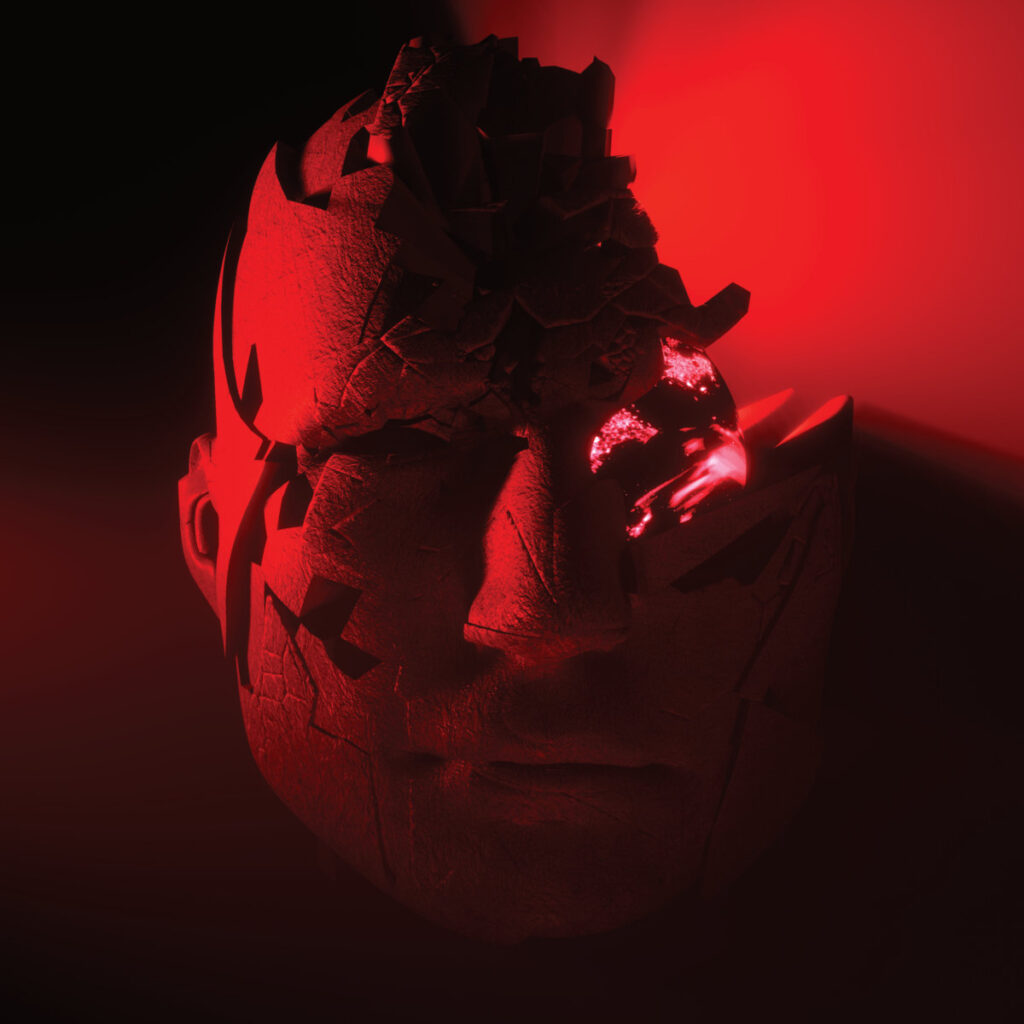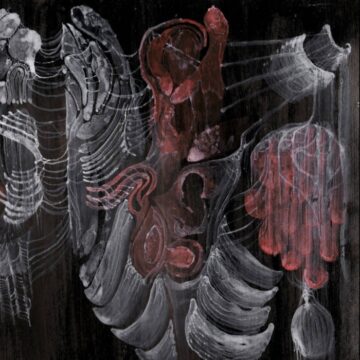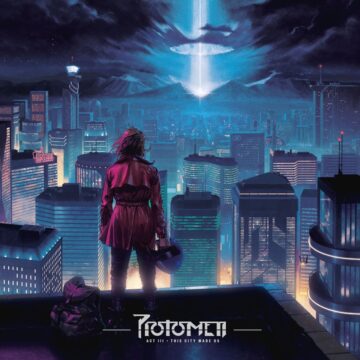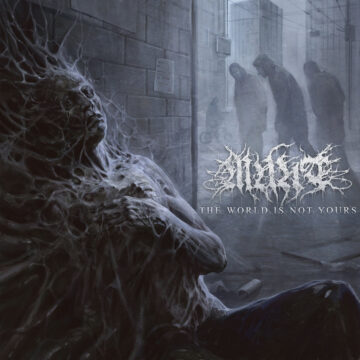Review: Tacoma Narrows Bridge Disaster – The World Inside

Style: post-rock (mostly instrumental, clean vocals)
Review by: Callum
Country: UK
Release date: August 19, 2021
A bit of a mouthful, and a far cry from the quartet’s hometown of London, the Tacoma Narrows Bridge Disaster of 1940 is an interesting name for a modern post-rock outfit. Perhaps the moniker’s purpose is to evoke deep introspection of the impermanence of man’s creations, or to keep important historical events in the mind’s eye like U2, Rammstein, or Franz Ferdinand. Maybe it just sounds edgy. Regardless, it is somewhat fitting for a music genre characterised by soft rumbles that slowly build into tremors and eventually a loud, dramatic, and devastating climax like that of a bridge collapsing.
TNBD straddles the line between post-rock and post-metal with a healthy balance between atmospheric soundscapes and colossal riffs. Strong influences from bands like Tool and ISIS can frequently be heard, though without mimicking either. As with a lot of great post-rock, the record generally conjures the feeling of slowly floating through space, gazing at spectacular starscapes while solemnly interrogating your own existence. Similarly, as with a lot of great – particularly instrumental – post-rock, this reviewer finds it difficult to describe what would make a perfect 10, but knows that this isn’t quite it despite having no fatal flaws.
TNBD have been active since 2009, releasing one album every third year before eventually going on hiatus from 2015 until now. The World Inside is structured slightly differently to their previous three works in that it is made up of six mostly lengthy tracks; a departure from the 8 to 10 shorter tracks of old. Regardless, the structure and order of tracks on this record is mostly faultless. The two opening tracks are singles released in the weeks prior to the full release that would sensibly appeal to the widest audience. “Machinations” immediately creates an abundance of atmosphere from the synths and liberal use of an EBow on guitar strings. Some flourishes here and there give a Tron: Legacy OST-like feel, while the thick and forward bass and drums introduce an undeniable groove. The guitar tone here sounds remarkably like Karnivool, with similar clever use of reverb to expand the sound out into space. “The World Inside” holds a lot of characteristics that fans of post-rock will find familiar, although a distinct groove permeates several of the sections, and the increase in intensity in stages is appreciated. Rather than resorting to a predictable sine wave of evenly interspersed peaks and troughs, each section builds to the next, and while the distortion may drop off and the tempo slow in every other transition, it never dips all the way back to the clean, spacey intro riff. This directionality means that the listener ends up in an entirely different place than where they started, having been on a journey that has taken them between groovy melodies, distorted power chord strikes, and the final deep, introspective, soundscape that slowly trails off.
In “Presynaptic”, the drums are given their time to shine. Playing over layers of static, the drums boom through the din rather than being thrown over the top as a result of being low in the mix. This gives them a powerful yet ethereal feel. Although “Presynaptic” doesn’t transition seamlessly or stylistically as one might expect into “Postsynaptic”, the former is a worthwhile breather before the next long epics while the latter is a personal favourite on the album. The Tool influence is strong here, particularly from 2019’s Fear Inoculum. Granica’s bass even sounds more Chancellor-like as the song goes on. This is also a darker guitar-riff loaded track in the vein of Pelican or Russian Circles, and these heavier sections are arrived at much quicker than in previous tracks. The build up starting at 4:45 in particular is phenomenal and (unlike Fear Inoculum) eventually leads to a climax well worth the wait. “Apocryphal” is the ideal ending track as it climaxes with the heaviest riffs and loudest guitars, while maintaining ample amounts of dreamy soundscapes representative of the band’s core sound. “Truth Escapes” is rightfully not simply tacked on at the end of the album despite being a single released way back in 2020. However, I would put forward that a more sensible home for it would have been just before the closing track rather than being sandwiched between “Pre-” and “Postsynaptic”. Despite this, it is a refreshingly different track being the only one with just a few, tasteful lines of vocals concerning the seeking of life’s meaning. The chord progression and melody in this track is strongly redolent of ISIS: contemplative, gloomy, and pained.
The bass and drums are some of the greatest strengths of this record. Much like Carey and Chancellor, they work together in harmony to drive the pulse of each track, while both are basically lead instruments. The drums sound massive, which is ideal for the big riffs and atmosphere, while the way the bass grooves and often plays a different interpretation of the lead guitar riffs keeps even long tracks interesting all the way through. Highlights of the two include the midsection of “Machinations”, “Presynaptic” for the drums especially, and the shuffle groove near the beginning of “Apocryphal” that transitions into a dark crushing riff while deftly maintaining the same pulse. Conversely, the lead guitar is, at times, a weaker component. I find the “Schism”/”Forty Six & 2” palm muted hammer-ons slightly jarring. Of course Adam Jones has no trademark on this technique, however the band already sounds stylistically similar to Tool without this conspicuous recycling of a well known sound. Speaking of recycling, my only other gripe concerns the almost cliché post-rock climax formula: dramatic pause, drum hit, distortion pedal on, emotional tremolo picked guitar solo. Referencing the first climax in “Machinations” in particular, it’s by no means a deal breaker and TNBD are by no means the worst offenders, it’s just become a bit of a tired trope at this point in the genre’s development.
I’m no closer to determining what makes a mostly instrumental album like this a 10/10. The gripes I mentioned are entirely personal but distracting enough for me to not consider the record flawless. On the other hand, it is excellent. It checks all the boxes of a post-rock record being emotive, introspective, and features phenomenal build ups and spine tingling apexes. There are plenty of gritty and dark riffs to appeal to fans of the heavier side of things, yet an abundance of melody, groove, and dreamy atmosphere to appeal to just about anyone else.
Side note: If this isn’t enough post-rock for you, our very own Nick wrote a fantastic feature on three amazing, lesser-known post-rock records we really think you should check out! You can read that article here.
Recommended tracks: Postsynaptic, Truth Escapes, Apocryphal
Recommended for fans of: Tool, Karnivool, ISIS
Final verdict: 7.5/10
Related links: Bandcamp | Spotify | Facebook
Label: Post Recordings – Website | Facebook
Tacoma Narrows Bridge Disaster is:
– Drew Vernon (guitar, synthesisers)
– Andrea Longo (guitar)
– Tom Granica (bass)
– Ben Wilsker (drums)



1 Comment